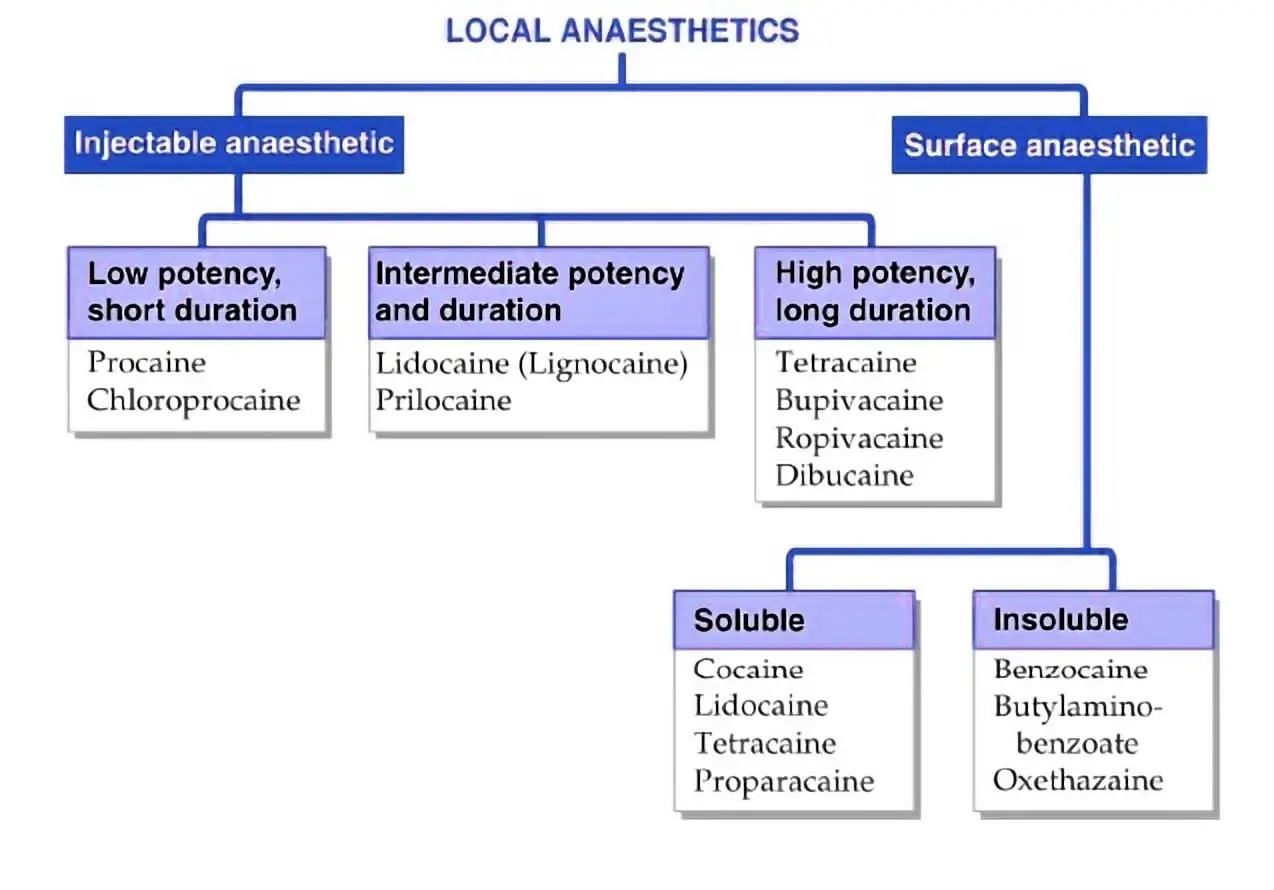Local anesthetics are unsung heroes in the world of medicine. They make surgeries and medical procedures less painful and more bearable. But what exactly are they, and how are they classified?
Local Anesthetics: What Are They?
Local anesthetics are medications used to induce a reversible loss of sensation in a specific part of the body. They work by blocking nerve signals in the area where they are applied or injected. This means you can undergo medical procedures without feeling pain in that particular region.
Classification
LOCAL ANAESTHETICS
- Injectable anaesthetic
- Low potency (short duration)- Procaine, Chloroprocaine
- Intermediate potency and duration- Lidocaine (Lignocaine), Prilocaine
- High potency (long duration)- Tetracaine, Bupivacaine, Ropivacaine, Dibucaine
- Surface anaesthetic
- Soluble- Insoluble, Cocaine, Lidocaine, Tetracaine, Proparacaine
- Insoluble- Benzocaine,Butylamino- benzoate, Oxethazaine
Classification of Local Anesthetics Based on Their Chemical Structure
1. Esters:
Esters are one of the two main classes of local anesthetics. They are usually metabolized more quickly by the body.
- Cocaine: Cocaine is perhaps one of the most famous local anesthetics, but it’s rarely used today due to its addictive properties.
2. Amides:
Amides are the other main class of local anesthetics. They tend to have longer-lasting effects compared to esters.
- Lidocaine: Lidocaine is one of the most commonly used local anesthetics. It’s versatile and comes in various forms, including creams, injections, and sprays.
- Bupivacaine: Bupivacaine has a longer duration of action and is often used for surgeries and epidurals.
- Ropivacaine: Similar to bupivacaine, ropivacaine is used for longer procedures and provides a good balance between pain relief and safety.
Classification of Local Anesthetics Based on Duration of Action
1. Short-Acting:
- Procaine: Procaine is short-acting and is commonly used for minor procedures or dental work.
2. Intermediate-Acting:
- Lidocaine: Lidocaine falls into this category, offering a balance between quick onset and reasonable duration.
3. Long-Acting:
- Bupivacaine and Ropivacaine: These are long-acting local anesthetics, ideal for surgeries and post-operative pain management.
Reference
- Classification of Progestins- KD Tripathi
- National Library of Medicine- Local Anesthetics
Related Links

I am a Registered Pharmacist under the Pharmacy Act, 1948, and the founder of PharmacyFreak.com. I hold a Bachelor of Pharmacy degree from Rungta College of Pharmaceutical Science and Research. With a strong academic foundation and practical knowledge, I am committed to providing accurate, easy-to-understand content to support pharmacy students and professionals. My aim is to make complex pharmaceutical concepts accessible and useful for real-world application.
Mail- Sachin@pharmacyfreak.com
